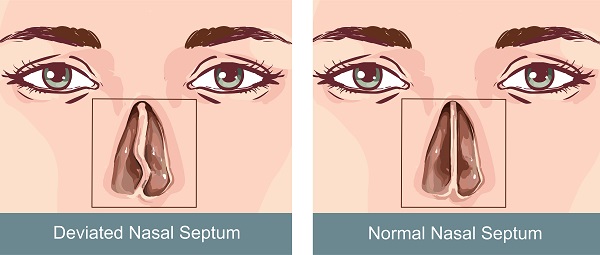Deviated Nasal Septum

Nasal septum repair, also known as a turbinectomy or a septoplasty, is used to correct deviated septums. During deviated septum repair, the septum is straightened and realigned to the middle of the nasal passageways where it should be. Septoplasty can drastically improve quality of life and upper respiratory health for many people with deviated septums. The incisions are small and made inside the nostrils so they are not visible.
Septum repair is often coupled with cosmetic enhancement of the nose, known as rhinoplasty (a.k.a. nose jobs). It is not uncommon to see rhinoplasties and septoplasties performed together because deviated septums, especially those from trauma, can cause abnormalities or some dissatisfaction in the external structure or appearance of the nose, as well. The procedure can be done under local or general anesthesia depending on the overall health of the individual and whether or not other procedures are being performed at the same time.
Did you know Dr. Sinha is also a board certified Atlanta plastic surgeon?
If you're considering an Atlanta rhinoplasty surgery or Atlanta facelift surgery be sure to check out his amazing results.
Septoplasty surgery is typically done as an outpatient procedure, meaning an overnight stay at a hospital is not typically needed. As with all surgeries, septoplasty surgery involves certain risks, including those associated with anesthesia. After septoplasty surgery, most individuals experience drastically improved breathing and often improved sleep quality for themselves and their bed partners. Nasal and sinus infections become less frequent and less severe after deviated septum repair and uncontrollable nosebleeds often become a thing of the past.
